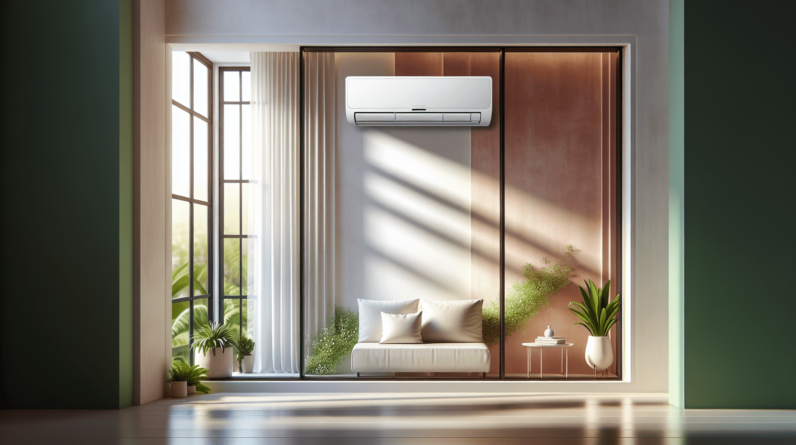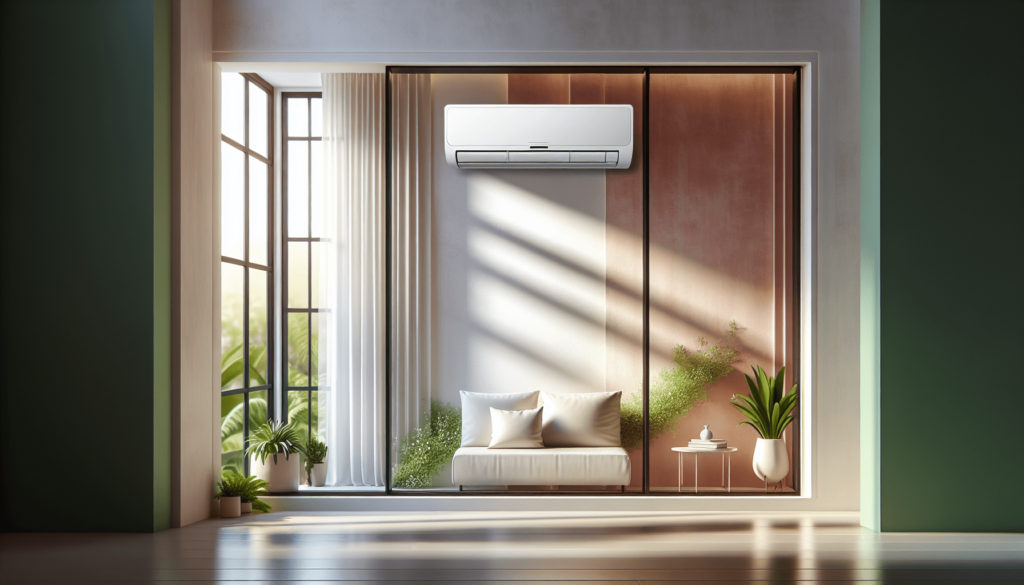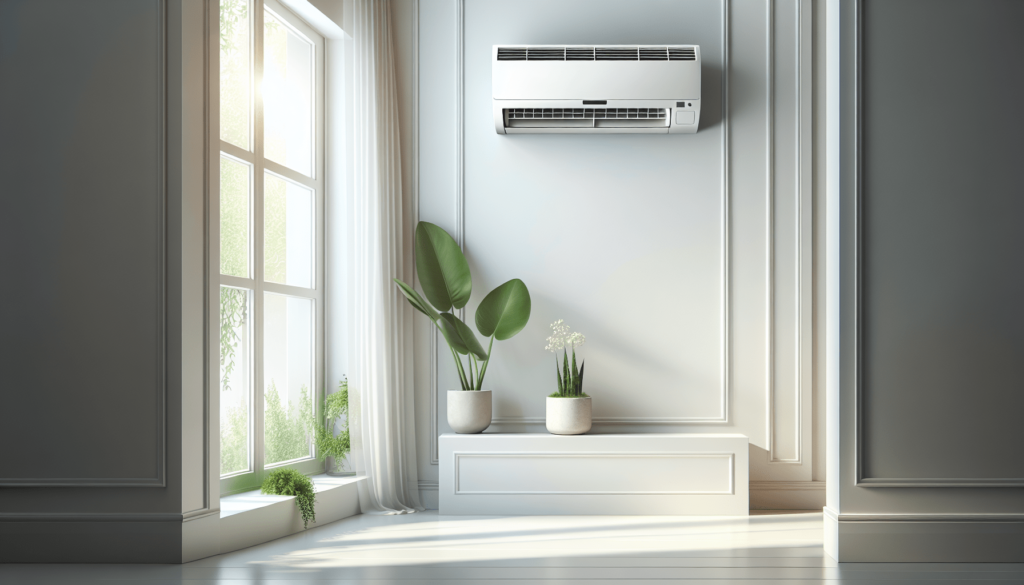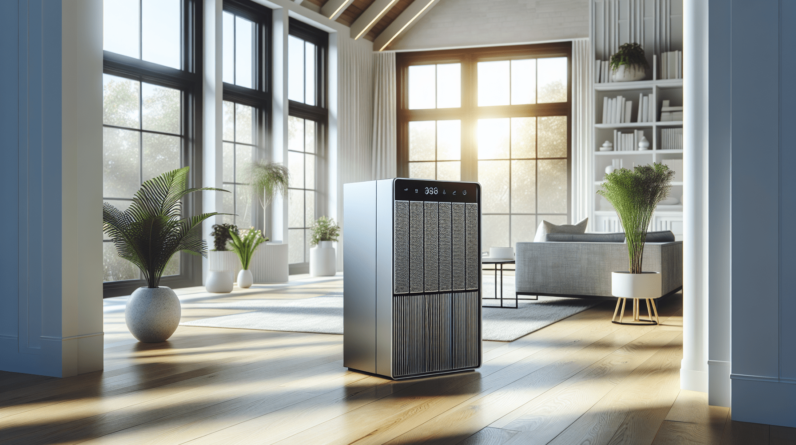

Are you feeling the heat and searching for a way to cool down your space? Small window air conditioner units might just be the perfect solution you’ve been looking for. These compact yet powerful systems can provide relief during those sweltering summer days without overwhelming your living space or your budget. Let’s take a closer look at what these units are, their benefits, installation tips, and some key factors to consider when selecting the right unit for your needs.
What Are Small Window Air Conditioner Units?
Small window air conditioner units are designed specifically to fit into a window frame, making them a convenient option for cooling single rooms. While they come in various sizes and cooling capacities, their primary function remains the same: to offer efficient and localized temperature control.
By installing one of these units, you can create a comfortable atmosphere exactly where you need it, which is perfect for apartment dwellers or anyone who doesn’t want to remodel their home to accommodate central air conditioning.
Features of Small Window Air Conditioners
Understanding the essential features of these air conditioners can help you make an informed choice:
- Size and Dimensions: Designed to fit most standard windows, these units are usually compact, occupying minimal space while still being powerful.
- Cooling Capacity: Most small window units have cooling capacities measured in British Thermal Units (BTUs). The higher the BTU rating, the more powerful the unit, allowing it to cool larger areas more efficiently.
- Energy Efficiency Ratio (EER): This parameter indicates the unit’s efficiency. A higher EER means lower energy consumption and cost-effectiveness, which benefits both your wallet and the environment.
- Fan Speeds: Different fan speed settings allow you to customize airflow based on your comfort needs.
By keeping these features in mind, you can find a unit that aligns with your cooling requirements and preferences.
Benefits of Small Window Air Conditioner Units
There are numerous reasons to consider investing in a small window air conditioner unit:
Cost-Effective Solutions
Small window units typically have lower upfront costs compared to central air systems. They also require less maintenance, which can save you even more money in the long run. Additionally, many models come with energy-saving features that further reduce electricity bills.
Easy Installation
You don’t need a professional installation service to set these units up. Most small window air conditioners come with user-friendly installation kits that allow you to mount the unit securely on your own.
Portability
While these air conditioners are designed to fit in windows, many units are lightweight enough to be moved from one room to another. If you want to cool specific areas at different times, you have the flexibility to choose where you need it the most.
Environmental Benefits
With energy-efficient models, these units consume less power, contributing to lower carbon footprints. Many brands are also moving towards eco-friendly refrigerants that are less harmful to the environment.
Targeted Cooling
Unlike central air systems that blast cold air throughout your entire home, small window air conditioners allow for targeted cooling. You can focus on the room you spend the most time in, whether it’s your bedroom, office, or living room.

Understanding BTUs and Room Size
When choosing a small window air conditioner, you’ll want to pay close attention to the BTU rating, which will determine how large of a space a unit can efficiently cool.
How to Calculate the Right BTUs for Your Room
To select an appropriately sized air conditioner, consider the following formula:
- Room Size in Square Feet: Measure the length and width of your room and multiply them to get the total square footage.
- Recommended BTU Range: Refer to the general guidelines below:
| Room Size (sq ft) | Minimum BTUs Needed |
|---|---|
| 100 – 150 | 5,000 |
| 150 – 250 | 6,000 |
| 250 – 350 | 7,000 |
| 350 – 450 | 8,000 |
| 450 – 550 | 10,000 |
| 550 – 700 | 12,000 |
Keep in mind that factors like ceiling height, the number of windows, and local climate can also influence your BTU needs.
Installation Tips for Small Window AC Units
Installing your small window air conditioner correctly is crucial for efficient operation. Here are some steps to guide you through the process:
Gather Your Tools
Before you start, make sure you have the necessary tools:
- Screwdriver
- Level
- Measuring tape
- Support brackets (if required)
Measure Your Window
Double-check the window dimensions to ensure that the unit will fit. Most air conditioners come with specific requirements regarding the window height and width.
Clear the Area
Remove any blinds or barriers that might obstruct the installation. This will give you ample space to work during the process.

Install the Air Conditioner
-
Position the Unit: Slightly tilt the unit back to allow water to drain properly. Place it in the window frame, ensuring it sits evenly.
-
Secure the Unit: Use screws and brackets to fasten the unit in place. Ensure that it is stable to mitigate any risk of it falling.
-
Seal the Edges: Use weatherstripping to seal gaps between the window and the unit, improving energy efficiency and climate control.
-
Plug It In and Test: Finally, plug in your air conditioner and run it to ensure that it cools properly.
Safety Considerations
Always prioritize safety. If you feel uncomfortable installing it yourself or encounter any issues, consider hiring a professional to assist you.

Maintenance Tips for Optimal Performance
To keep your small window air conditioning unit running smoothly and efficiently, regular maintenance is imperative. Here are some tips:
Clean or Replace Filters
Air filters trap dust and allergens, ensuring that the air you breathe is clean. Check the filters monthly and clean or replace them as necessary, typically every 1-3 months.
Keep the Unit Clean
Dust and dirt can accumulate on the exterior and coils. Wipe down the exterior with a damp cloth, and gently vacuum or brush the coils to avoid inefficiency.
Check for Blockages
Make sure nothing obstructs airflow around the unit, both inside and outside. Clear any debris from the area surrounding the outdoor condenser if applicable.
Monitor Refrigerant Levels
If you notice reduced cooling performance, it might indicate a refrigerant leak. Contact a professional to diagnose and repair this issue promptly.
Seasonal Preparation
Before summer, conduct a thorough check of the air conditioner. Conversely, at the end of the season, consider removing the unit or covering it to protect it from winter weather.
Potential Drawbacks of Small Window Air Conditioners
While small window air conditioners come with many benefits, they also have some limitations to consider. Understanding these drawbacks can help you weigh your options more effectively.
Limited Cooling Capacity
Small window units are designed for cooling single rooms rather than entire homes. If you need to cool multiple spaces simultaneously, you might find these units insufficient.
Noise Levels
Unlike central air systems, small window units can produce noticeable noise. If you are sensitive to sound while sleeping or working, look for units that emphasize quiet operation.
Blocking Window Access
When installed, these units primarily block window access. If a window serves as an exit route or needs to remain open for airflow, that could pose a problem.
Aesthetic Concerns
Some users may find the look of a window unit less appealing than a central air system. They are visible from the outside and can impact the overall appearance of the window.
Choosing the Right Small Window Air Conditioner
With so many options on the market, finding the ideal small window air conditioner for your specific needs can be overwhelming. Here are key factors to consider:
Energy Efficiency
Pay attention to the EER or the Energy Star rating that indicates the unit’s efficiency. Investing in a model with a high rating can reduce your energy costs significantly.
Budget
Determine your budget before you start shopping. Prices can vary significantly based on brand, features, and energy efficiency. Aim to find a balance between quality and affordability.
Noise Level
Check the decibel rating in the specifications. Units that operate below 50 decibels are generally quieter and more suitable for bedrooms or study areas.
Brand Reputation and Reviews
Look for brands known for durability and reliability. Reading customer reviews can give you insights into ease of use, performance, and any potential issues.
Warranty and Support
Consider the warranty offered by the manufacturer. A longer warranty starts your relationship with assurance, and reputable customer support can make dealing with any issues much simpler.
Conclusion
Small window air conditioning units can be a fantastic addition to your home, making the sweltering days of summer much more bearable. With their compact size, energy efficiency, and affordability, they’re a practical choice for countless people. Always weigh the pros and cons, calculate the appropriate BTUs, and consider your specific needs before making a final decision.
By properly maintaining your unit and keeping it clean, you can enjoy the refreshing cool air it provides for years to come. So, if you’re ready to take on summer heat like a champ, investing in a small window air conditioner might be just the thing you need!






